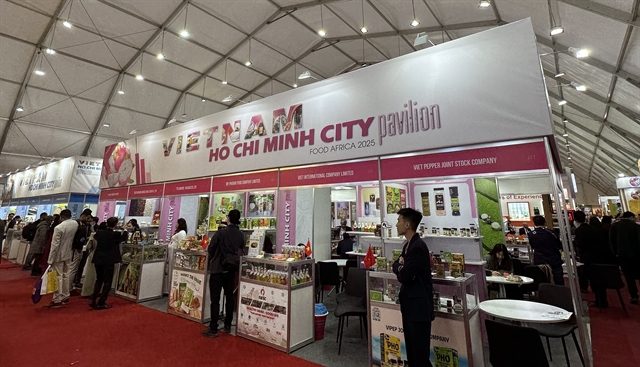 Economy
Economy

 |
| VPBank's Trần Hưng Đạo branch in Hà Nội. The local forex market is basically going smoothly and credit institutions can meet legal foreign currency needs of customers. — VNA/VNS Photo Trần Việt |
{ "id": "yOosQa-lRj", "type": "myToolImages", "data": { "data": "" } }
HÀ NỘI — The foreign exchange market has been improved and the Vietnamese đồng currently devalued by about 3.81 per cent against the US dollar compared to the beginning of this year, deputy governor of the State Bank of Vietnam (SBV) Đào Minh Tú said on Tuesday.
At a press conference to implement works of the banking industry in 2023 held on Tuesday, Tú said the devaluation rate of the đồng was lower than that of many countries in the world.
According to Tú, maintaining the exchange rate stability was one of the most difficult tasks for the SBV in 2022. However, the local forex market is basically going smoothly and credit institutions can meet the legal foreign currency needs of customers.
Notably, he said, after it was forced to sell a large amount of greenback earlier in the year to support the đồng, the SBV now can buy the US dollar to increase the nation’s foreign exchange reserves thanks to the improvement in the forex market.
As for credit, Tú said the credit of the banking system as of December 21 this year rose by 12.87 per cent compared to the end of 2021 and 13.96 per cent year-on-year to more than VNĐ 11.78 quadrillion.
He said the credit continually focused on production and business while having been controlled to potentially risky sectors. Of which, outstanding loans of 23 policy credit programmes of the Bank for Social Policies as of November 30, 2022, reached about VNĐ279.73 trillion, an increase of 12.81 per cent compared to 2021, with more than 6.4 million customers.
According to Tú, based on the 2022 credit growth target of about 14 per cent, the SBV managed the credit granting to meet capital needs for production and business, and support economic recovery, but it wasn’t cautious with inflation risks.
The SBV directed credit institutions to ensure credit growth safely and effectively, with focus on the Government’s priority industries and strict control of potentially risky areas such as investment in corporate bonds, securities and real estate.
According to the SBV, credit institutions in 2022 continued to implement a number of urgent solutions to remove difficulties and support COVID-19 affected customers. By the end of June 2022, credit institutions restructured the repayment term and kept the same debt group for nearly 1.1 million customers with cumulative loans of more than VNĐ722 trillion.
The banking industry has targeted to reduce input costs with an aim to cut lending interest rates to support economic recovery. Interest rates were maintained at a low level in the first half of 2022.
However, in the second half of 2022, the global development had a strong impact on Việt Nam's exchange rate, which forced the SBV to raise the policy rate in September to make it in line with the global trend. However, Việt Nam’s policy rate hike was much lower than that of other countries. The average lending interest rate also increased by only about 0.8 per cent compared to the end of 2021, much lower than that of other countries.
According to Tú, the SBV decided to adjust up the 2022 credit growth target by 1.5-2 per cent in the last month of the year as the domestic exchange rate, inflation and liquidity of the banking system were improved. The rising credit prioritises credit institutions with good liquidity and low interest rates.
Tú said the inflation rate should be below 4 per cent in 2022, and that non-performing loans in the banking system were under control.
The SBV would manage monetary policy in a flexible way to keep inflation at 4.5 per cent next year, aiming to stabilise the monetary and foreign exchange markets to ensure the safety of the banking system, he said. — VNS




